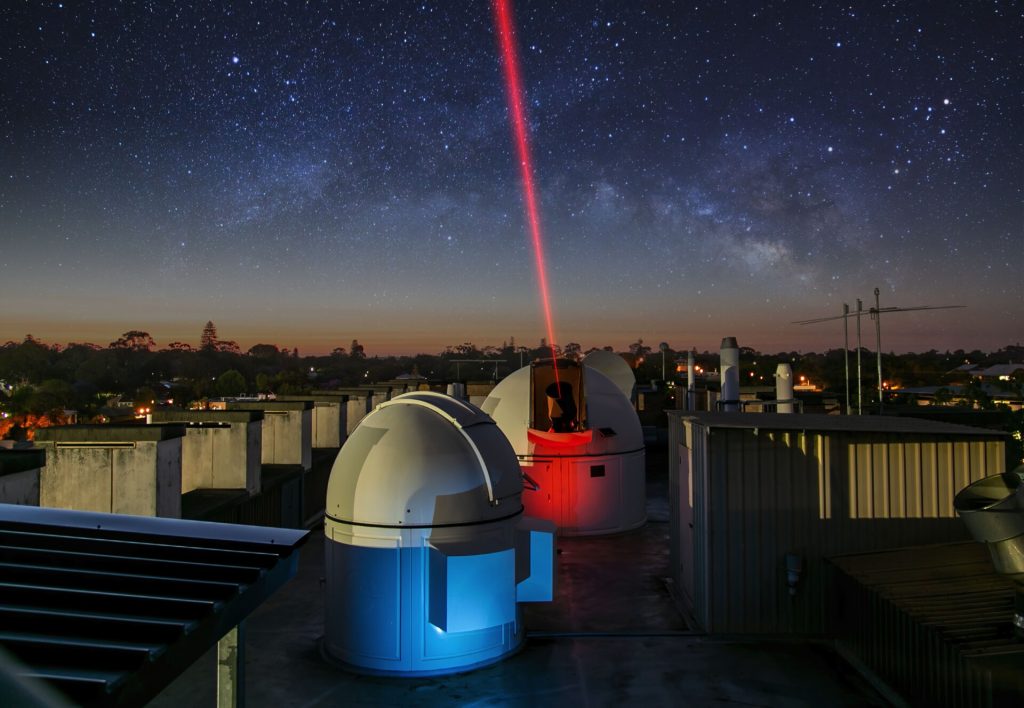The German satellite transmitted laser signals to a ground station mounted on a jeep in a ground-based test that could dramatically change communications between space and Earth, increasing speeds and avoiding data congestion.
TeraNet, a network of optical ground stations, received the signal from a laser communications payload aboard the OSIRISv1 satellite in low Earth orbit. Two TeraNet ground stations, including custom-built jeep trucks with onboard receivers, detected the signal.
Led by a team of researchers from the University of Western Australia, the demonstration aims to establish communications between various space missions in low Earth orbit and on the Moon. Ever since the first satellite was launched into space in 1957, space agencies have relied on radio waves to communicate with ground stations. So far, that has worked well, but as the concentration of satellites in Earth’s orbit and demand for data continues to grow, a bottleneck of signals coming from space has been created.
Optical communications, or lasers, help solve this problem. This type of communication system packs data into the light wave vibrations of a laser beam, encoding the message into a light signal that is transmitted to a receiver through infrared beams that are invisible to the human eye. Compared to radio waves, near-infrared packs data into much denser waves, allowing much more data to be sent and received.
NASA is experimenting with space lasers, sending and receiving signals to improve the technology. In November 2023, the space agency’s Deep Space Optical Communications experiment will send data encoded in a near-infrared laser to Earth. About 10 million miles into deep space (16 million kilometers) from the Hale Telescope at the California Institute of Technology’s Palomar Observatory in San Diego County, California. In December 2023, a gold-covered laser transceiver attached to NASA’s asteroid probe Psyche will They aired a 15-second video of an orange tabby cat. A dog named Taters is chasing a laser pointer across a couch.
The private space industry is also getting in on the action: The space laser communications market is expected to be worth about $1.13 billion in 2022, quadrupling by 2031. Quote According to Straits Research, Maharashtra, India.
Optical communications could potentially transmit data 10 to 100 times faster than the radio frequency systems used in spacecraft today. National Aeronautics and Space Administration (NASA)Longer distances make communication more difficult because directing the laser beam requires extreme precision. Weather also poses a challenge for laser communications, as clouds and rain can interfere with the signal.
The TerraNet team built a network of three ground stations spread across Western Australia to overcome weather challenges, allowing the satellites to transmit data to the stations under the clearest skies. The truck used in the recent demonstration was able to drive to the site and capture the signal within 15 minutes of arriving at its destination. UWA says the test paves the way for a 1,000-fold increase in communications bandwidth between space and Earth.
“This demonstration is an important first step towards establishing a next-generation space communications network across Western Australia,” team leader Sacha Shediwe, Associate Professor at the University of Western Australia, said in a statement. “Next steps include connecting this network to other optical ground stations currently under development in Australia and around the world.”
Want to know more about space flight? X Gizmodo’s exclusive bookmark Space Flight Page.


